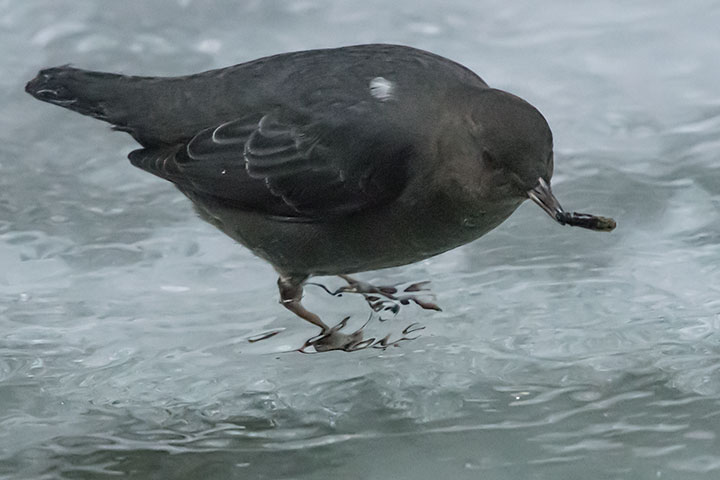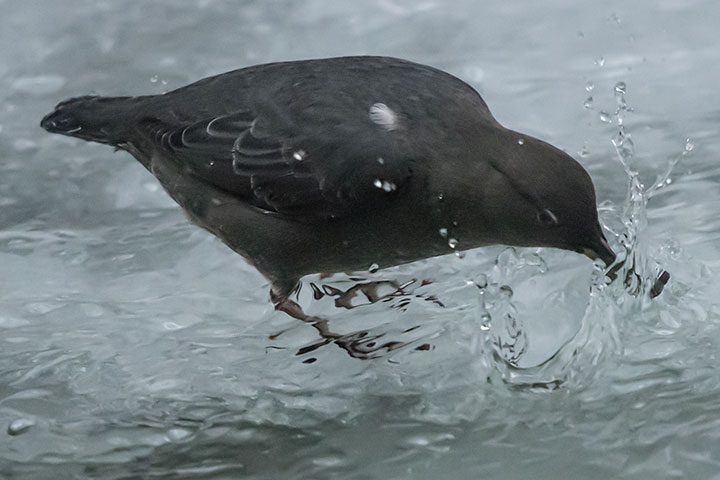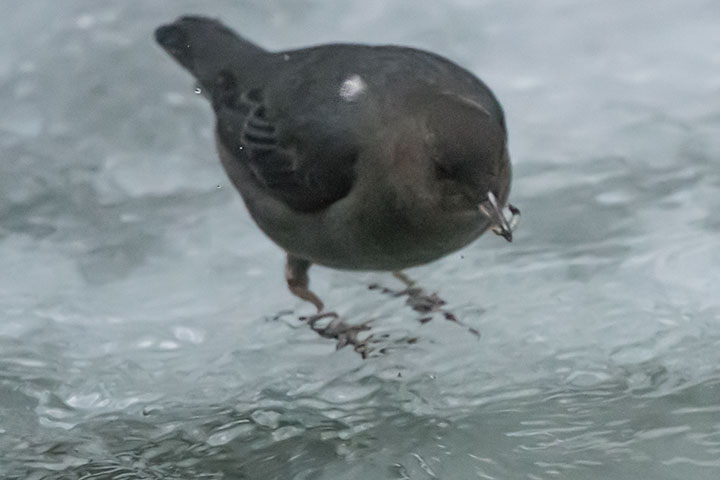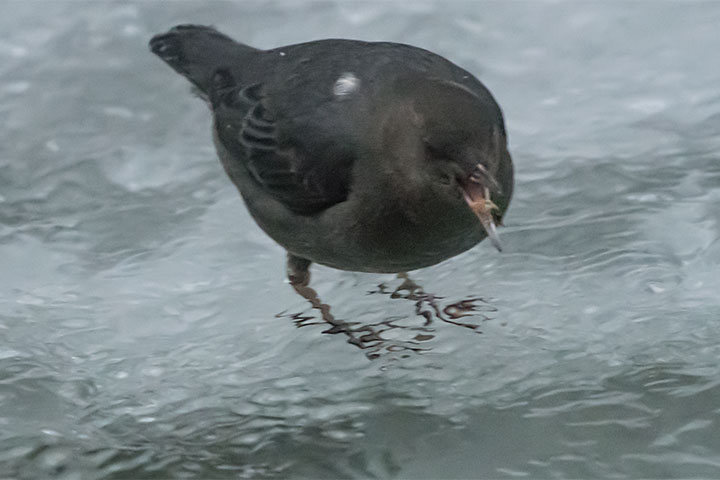Dot: This is the second of two postings about the behaviour of a dipper, dubbed Dot, owing to a white spot on its back.
Once thought to be a uniquely human characteristic, the use of tools is considered a sign of intelligence. Only a handful of animals have been credited with employing tools.
A tool is defined as any physical item that can be used to achieve a goal, especially one that is not consumed in the process. For example, sea otters use stones as tools to crack open mollusc shells so as to eat the abalone inside.
Interestingly, dippers face a problem similar to that of sea otters, but with caddisfly larvae. The larvae are encased in found materials (sand, wood) that prevent easy access to the grub inside. A solution sometimes employed by a dipper is to shake off the casing. That, of course, does not represent using a tool, which would necessitate using of an external physical object for the task.
However on this occasion, a dipper does seem to make use of a tool.
A dipper surfaces from a dive with a caddisfly larva encased in found material. Dot is standing in shallow water atop anchor ice.

To remove the casing, Dot swishes it through the water. The water has become the tool that is used to remove the casing, much as a rock is used to remove a shell by a sea otter.

The casing having been removed, the grub is exposed.

Five seconds after the first picture, the larva has been consumed.
Can we really credit this dipper with having employed a tool to gain access to the grub?


“Can we really credit this dipper with having employed a tool to gain access to the grub?”
By most definitions of the word ‘tool,’ I suppose not. But clearly Dot knows something about the nature of caddisfly casings – maybe best to think of his/her use of this knowledge as a kind of ‘party trick’ and leave it at that.
Others will of course have other ideas; but mostly I’m writing to express my gratitude for the great pleasure your posts have given me in 2017, as in previous years. Here’s wishing you and yours all good things – not least including many post-worthy experiences – in the coming year.
Trevor
If you consider water a tool in this instance, you’d also have to consider a branch a tool when a bird beats a “hairy” caterpillar against a branch to remove the spines. By the same token the bark on a tree would be a tool when a nuthatch wedges a nut or seed in the bark to hammer it open. None of these are tools.
Whether or not the dipper uses a tool, the discussion and photographs are fascinating and a real contribution for which I thank you, Alistair. You have helped immeasurably in a difficult year and I echo Trevor Goward’s remarks.
Fond memories of our visit in the Summer with Dave and Barb Douglas. Have greatly enjoyed your wonderful pictures. May 2018 bring many more opportunities to get unusual photos which I look forward to seeing. Happy New Year.
An absolutely wonderful sequence of photos, Alistair. Thank you for helping me learn more about my favourite animals and the others relying on them as a food source. This is marvellous information to share during school visits – your excellent post provides yet another highlight of the beauty and wonder to be found by exploring the natural world.